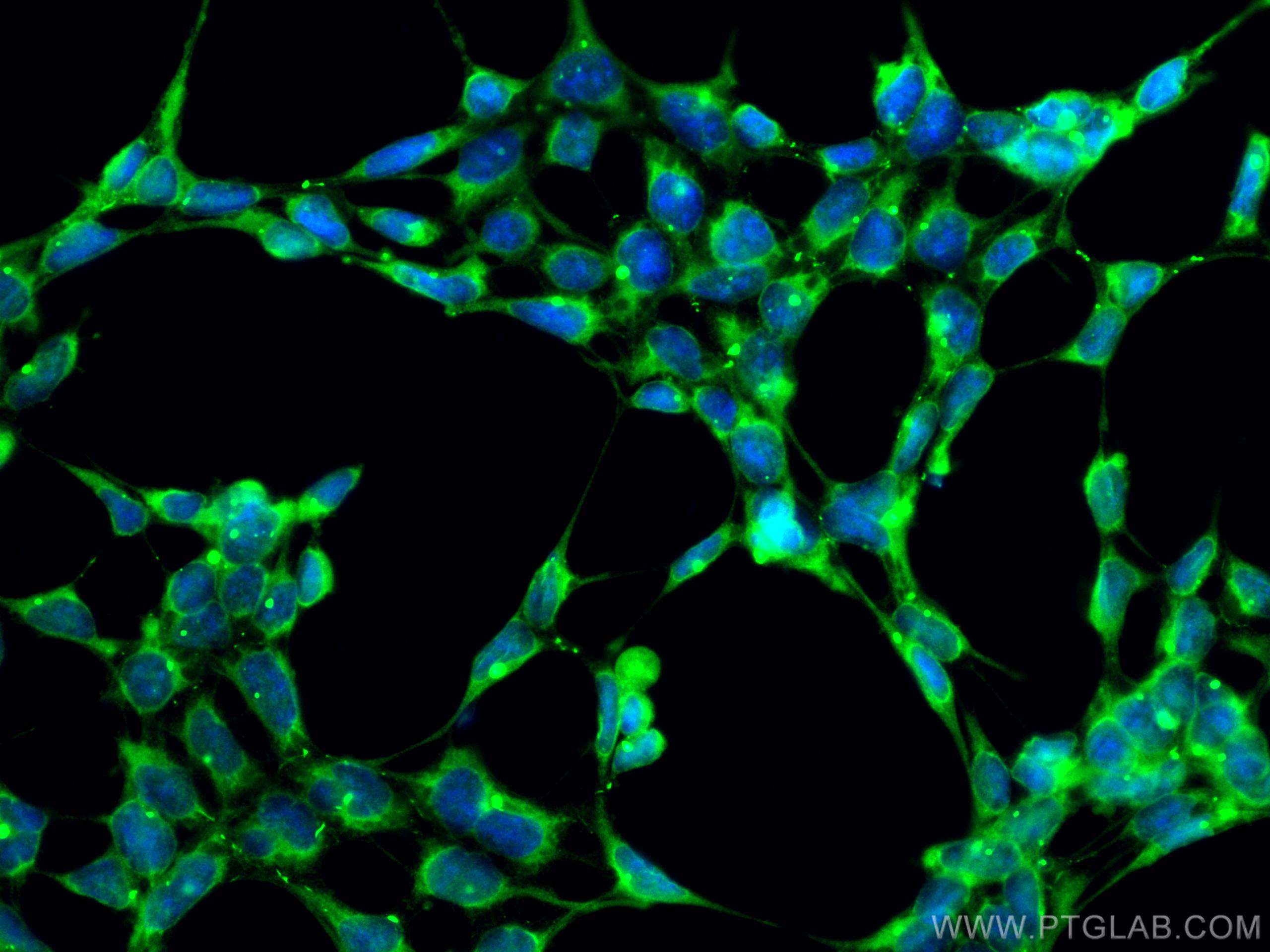Validation Data Gallery
Tested Applications
| Positive IF/ICC detected in | HEK-293 cells |
Recommended dilution
| Application | Dilution |
|---|---|
| Immunofluorescence (IF)/ICC | IF/ICC : 1:50-1:500 |
| It is recommended that this reagent should be titrated in each testing system to obtain optimal results. | |
| Sample-dependent, Check data in validation data gallery. | |
Product Information
CL488-66791 targets CDR2L in IF/ICC applications and shows reactivity with Human, Mouse, Rat samples.
| Tested Reactivity | Human, Mouse, Rat |
| Host / Isotype | Mouse / IgG1 |
| Class | Monoclonal |
| Type | Antibody |
| Immunogen |
CatNo: Ag6139 Product name: Recombinant human CDR2L protein Source: e coli.-derived, PET28a Tag: 6*His Domain: 110-459 aa of BC047534 Sequence: TETIERLQAQVEELQAQVEQLRGLEQLRVLREKRERRRTIHTFPCLKELCTSPRCKDAFRLHSSSLELGPRPLEQENERLQTLVGALRSQVSQERQRKERAEREYTAVLQEYSELERQLCEMEACRLRVQELEAELLELQQMKQAKTYLLGPDDHLAEALLAPLTQAPEADDPQPGRGDDLGAQDGVSSPAASPGHVVRKSCSDTALNAIVAKDPASRHAGNLTLHANSVRKRGMSILREVDEQYHALLEKYEELLSKCRQHGAGVRHAGVQTSRPISRDSSWRDLRGGEEGQGEVKAGEKSLSQHVEAVDKRLEQSQPEYKALFKEIFSRIQKTKADINATKVKTHSSK 相同性解析による交差性が予測される生物種 |
| Full Name | cerebellar degeneration-related protein 2-like |
| Calculated molecular weight | 53 kDa |
| Observed molecular weight | 54 kDa |
| GenBank accession number | BC047534 |
| Gene Symbol | CDR2L |
| Gene ID (NCBI) | 30850 |
| RRID | AB_2919371 |
| Conjugate | CoraLite® Plus 488 Fluorescent Dye |
| Excitation/Emission maxima wavelengths | 493 nm / 522 nm |
| Form | |
| Form | Liquid |
| Purification Method | Protein G purification |
| UNIPROT ID | Q86X02 |
| Storage Buffer | PBS with 50% glycerol, 0.05% Proclin300, 0.5% BSA{{ptg:BufferTemp}}7.3 |
| Storage Conditions | Store at -20°C. Avoid exposure to light. Stable for one year after shipment. Aliquoting is unnecessary for -20oC storage. |
Background Information
Cerebellar degeneration-related protein 2-like(CDR2L), also named as HUMPPA or Paraneoplastic 62 kDa antigen, is a 465 amino acid protein, which belongs to the CDR2 family. CDR2L contains three potential coiled-coil regions. The functions of protein is so far not known. CDR2L is expressed in the brain and localizes in the cytoplasm.
Protocols
| Product Specific Protocols | |
|---|---|
| IF protocol for CL Plus 488 CDR2L antibody CL488-66791 | Download protocol |
| Standard Protocols | |
|---|---|
| Click here to view our Standard Protocols |

